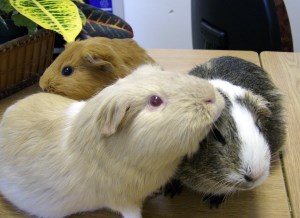
Cavia Porcellus
is the scientific name for guinea pigs, plump and tailless rodents who are also known as “cavies.”
In the past, guinea pigs lived primarily in the wild. They especially lived among the grasslands, forests, and savannas of South American countries like Brazil, Venezuela, Colombia, and Bolivia. Here, they roamed free and were sometimes considered a food source. In fact, the Incas relied on guinea pigs as food until the arrival of the Spanish in the 16
th
century.
The Spanish Conquistadors did not eat guinea pigs, but they did bring the cavies from their South American homelands to Europe. They sold the guinea pigs in European markets to make extra money. Because of this, guinea pigs have not lived in the wild since around 5,000 B.C.E., when they began to be domesticated as pets in many different nations.
Today and in recent decades, most places still consider guinea pigs pets instead of food. Even Queen Victoria, who ruled Great Britain and Ireland, and Princess of Diana of Wales had pet guinea pigs!
All guinea pigs are herbivores. This means they eat vegetables and fruits and drink water to survive. Guinea pigs are especially known to love healthy foods like kale, mustard greens, bell peppers, and blueberries. When fully-grown, they usually weigh about one and a half pounds. These furry little creatures are also unique because their teeth are always growing! Their tooth length is maintained by the grinding that occurs when they eat.
Guinea pigs are loved around the globe—if you’re considering getting a pet, be sure to add these lovable rodents to your list!
[Sources:
Live Science: Animal Diversity Web
;
ASPCA.com
]

